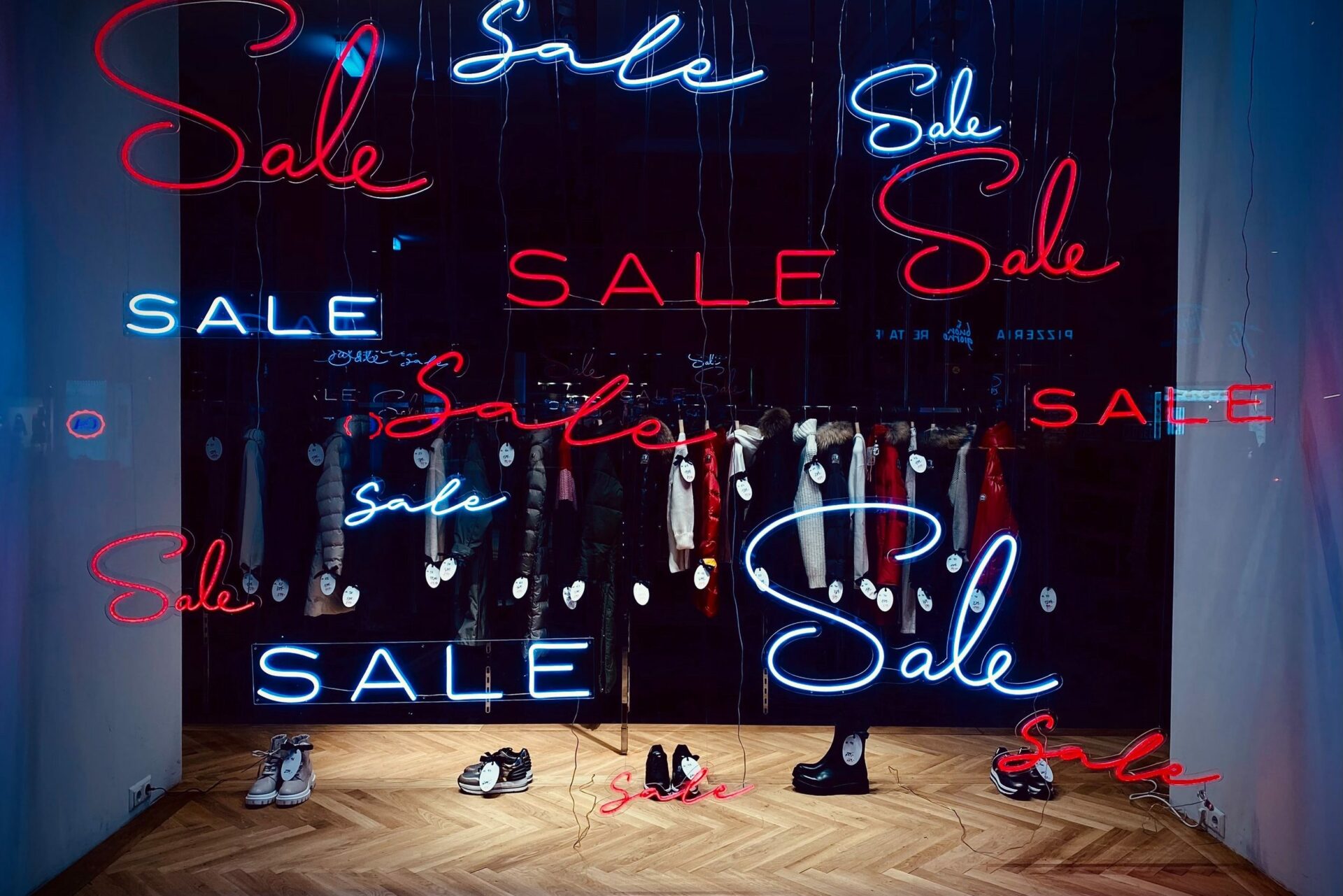It’s no secret that Gen Z is the generation every brand is trying to impress…
Getting Gen Z onboard is not only vital for a brand’s future survival (as it establishes consumer relations with the covetable young demographic that will hopefully be taken into the future) but they also have the potential to bring in big profits in the present with Bloomberg recently reporting that the cohort has $360 billion in disposable income. Gen Z are crucial spenders which cannot be overlooked.
Though Gen Z currently remains the most sought-after demographic, brands have also labelled the Gen Z generation as the ‘opaque generation’, inherently complex, hard to understand and even harder to market effectively to. Gen Z is the first digitally native cohort brought up alongside the rise of social media at an increasingly fast pace and in a consumer-driven society this brings new challenges for brands who are trying to engage and win over the hearts of young consumers.
In light of this, though there will never be a step-by-step guide or golden ticket to “unlocking” Gen Z, we have identified five key areas that have emerged as significant players in the Gen Z marketing space.
Buzzword: Embracing Crypto
Historically, brands have been wary of terms such as ‘Crypto currency’ and ‘Bitcoin’. Though cryptocurrency first emerged in 2008, invented by an unknown person or group of people using the name Satoshi Nakamoto, there has been an understandable reluctance from big brands to truly engage with, and understand this online currency.
Whilst some have put this resistance down to a (potentially false) belief that this currency only appeals to a niche market of online fanatics, others have argued that resistance has emerged out of a belief that understanding and executing the management of this currency is a demeaning endeavour which, so far, had not been worth the investment.
That being said, things are changing. In fact, it’s becoming increasingly apparent that an investment of time and money to understanding this currency is the future for brand survival.
Some of the biggest brands seem to have already recognised this. Last week Gucci became the first major fashion brand to announce that they are accepting cryptocurrency – a move which is not an isolated incident but reflective of a growing trend which has seen big brands such as Estee Lauder, Coca Cola and ASICS all evolving to understand and make Cryptocurrency a viable payment method to access their products.
These decisions from big brands shine a light on the importance of embracing this currency as part of a wider effort to appeal to Gen Z. Notably, a recent report from Morning Consult, reported 19% of survey takers owned some form of cryptocurrency and a separate report carried out by Crypto.com reported that as many as 75% of consumers and 60% of merchants want to make use of crypto in the market. These findings indicate that cryptocurrency is making its way into the mainstream.
Unsurprisingly then that 12% of our own community said that crypto was their preferred method of paying – an embrace of crypto is becoming increasingly crucial for any brand who wants to connect with Gen Z. At what risk might you ask? The end of last week saw Crypto plummet, so definitely advance with caution.
Celebrity ambassadors and influencer marketing
Unlike the resistance seen towards Cryptocurrency, celebrity ambassadors have historically been embraced by the biggest brands as an effective marketing strategy for many years now.
You only have to look back at the viral brand collaboration between Calvin Klein and Justin and Hailey Bieber in 2014 or current brand collaborations between Jack Grealish and Gucci to acknowledge that a partnership between big brands and popular well-loved celebs is a tried and tested method which can bring about big results for both brand and celebrity.
However, whilst celebrity ambassador deals are nothing new, it is becoming increasingly apparent that the way brands approach these deals is coming under scrutiny.
For Gen Z, a generation which has grown up alongside the rise of the ‘influencer’, inauthentic brand ambassadors don’t cut it. Though a successful campaign is like gold dust, the risks of getting it wrong are equally monumental.
2020 saw the UK Department of Health hop on the influencer bandwagon by paying well-known faces to promote the COVID-19 vaccine in their pro-vaccine campaign. They fell into the trap of poorly executed research and inauthenticity and they chose celebrities who were also taking brand deals to jet off to Dubai under the guise of ‘work’ and were facing public criticism themselves.
As Gen Z prioritises community and connection with brands, this extends into the way in which brands or organisations communicate authentically with their consumer.
Though the importance of celebrity endorsements and influencer partnerships has clearly been recognised – 73% of marketers say that they have allocated a budget for influencer marketing (Forrester, 2015, a stat likely to have increased in past years, background vetting is key. Crucially, for brand investments, Instagram influencers remain the most influential with over half, 56%, of our own Imagen Insights Gen Z community polled, saying that they are more likely to follow recommendations of an influencer on Instagram over other celebrities.
We believe a new emphasis needs to be placed on authenticity. For success with Gen Z, brands should seek to get celebrity ambassadors on board who authentically connect with the brand itself, driven by a desire to build the brand identity and appeal and connect with their current following as much as maximising profits and reaching new demographics.
An in-store / online hybrid
Counter to a growing belief that ‘online’ shopping is leading the way when it comes to shopping and consumer habits, it has recently been reported by ‘A.list’ that 80% of Gen Z said they not only shop in stores but actually look forward to it.
This statistic proves that it’s equally important for brands to think about the in-person shopping experience they are delivering as well as investing in their online presence and stores. Moreover, with 56% of Gen Z saying a “fun in-store experience” is important in deciding where they shop, creating an engaging space for shoppers cannot be overlooked by big brands who aim to engage Gen Z.
One key way of transforming the in-store experience that has seen major growth and investment over recent years has been the use of AR.
With stores like Timberland providing interactive AR experiences such as the ‘Magic mirror’, a digital mirror placed in the store window which allows customers to try on clothes digitally, the possibilities of AR within the in-store shopping space are increasingly becoming acknowledged as a crucial way of upping footfall within stores.
This move by brands such as Timberland is reflective of growing interest and excitement by Gen Z towards AR technology. As reported that 88% are interested in using AR to try on makeup or clothes, 60% say AR experiences feel more personal and over 60% agree that AR experiences make life easier, an embrace of AR seems in line with a wider appeal to the Gen Z demographic.
Brand collaborations
Sometimes, two brands are better than one.
Recent years have seen unexpected brand collaborations on the rise and they have proved to be one of the most effective means of marketing to the younger generation.
With brand collaborations allowing big brands to access the sought-after demographic of their fellow brands, the rise of brand collaborations and their consequent success appears rooted in a growing awareness that, sometimes collaboration is key.
Moreover, the most unlikely and controversial brand collaborations appear to bring about the most success. In September 2019, McDonald’s well and truly embraced the sentiment of ‘if you can’t beat them, join them’ as they joined up with Burger King for one day only to raise proceeds for childhood cancer. Dubbed ‘the day without the whopper’; Burger king stopped all sales of their infamous whopper whilst McDonald’s donated all proceeds from their Big Mac to charity. This brand collaboration not only raised thousands of dollars for charity but both brands were praised for their commitment to the good cause.
This was a prime example of how a brand collaboration can not only increase access to new customer demographics and transform their image in the eyes of the consumer but can also generate huge excitement around a campaign. This is echoed by our own community as 84% in a recent survey said that they find brand collabs more exciting than celebrity collaborations.
It seems there is a desire on the part of Gen Z to see more exciting and controversial brand collaborations with a meaningful message and purpose.
Offers vs. discounts
While their spending power might be set to increase to 4.4 trillion dollars by 2030, it is still vital to account for the fact that the Gen Z demographic, as a whole, spans from ages around 6 up to 26. Therefore the buckets of disposable income will vary amongst the different age brackets within this. Some will be of schooling age whereas others will be studying, just entering the workforce or already in it – so while many do have spare cash, it is imperative not to price this generation out of the realms of feasibility.
Once potentially viewed as an older habit, research has shown Gen Z are savvy and will share information online about discounts and deals with their communities. Research from Business Insider found that when deciding where to shop, Gen Z’s primary motivator is price, according to their survey of more than 1,800 Gen Zers. This was reflected within our Imagen Insights community with 72% stating that they prefer ‘slash price’ sales over other promotions like giveaways.
We also live in a world where we are spammed with discount codes, and friend referrals and at the click of a button can compare pricing from a multitude of different retailers. Gen Z has grown up having this comparison available to them at their fingertips and so brands have to acknowledge that.
Nonetheless, when it comes to low pricing and fast-moving consumer goods – brand ethics are also top of the Gen Z agenda. Although there remains a potential gap between intentional sustainable spending vs. the realities of Gen Z’s consumption habits, when it comes to fast fashion, for instance, they will still hold brands to account. They may still be keen to shop SHEIN and PLT but they are also becoming more aware of the ramifications of doing so. We say watch this space as this demographic gets older and their disposable income becomes greater.
In short
Despite these challenges and opportunities, at Imagen Insights we believe that connecting with Gen Z is not just essential for brands but is also incredibly rewarding – in fact, the benefits of listening to the needs and wants of this generation are not just reserved to making profits, gaining clout, or even securing survival. This is the generation that is calling upon brands to tap into their creativity and think differently.
The true reward of listening to Gen Z for your brand in our eyes? Innovation and growth by truly involving your target consumers in the conversation.
Authored by Helena French, Operations Assistant at Imagen Insights

